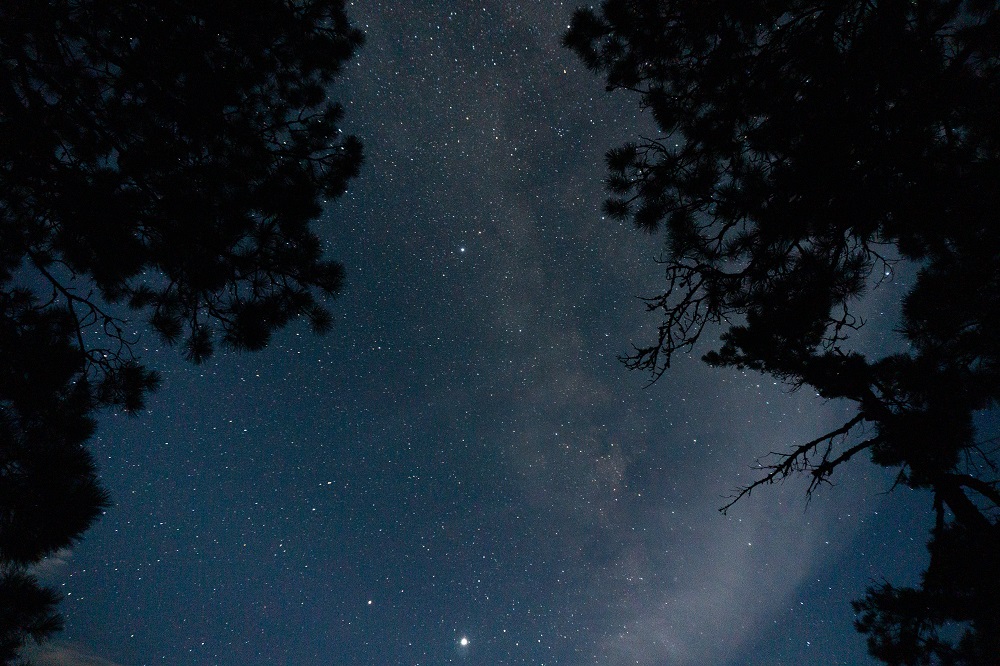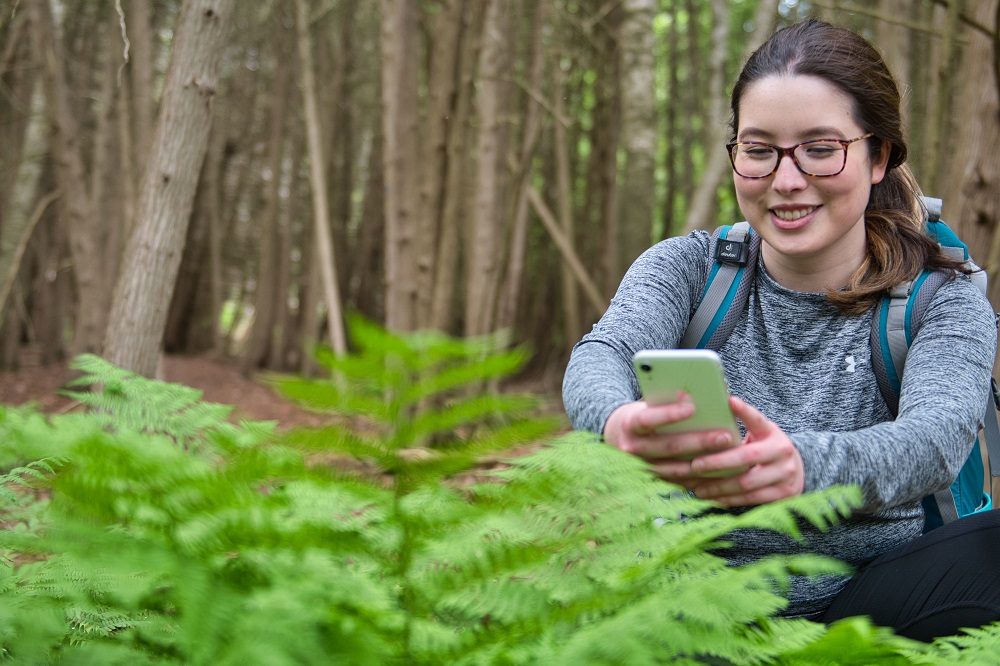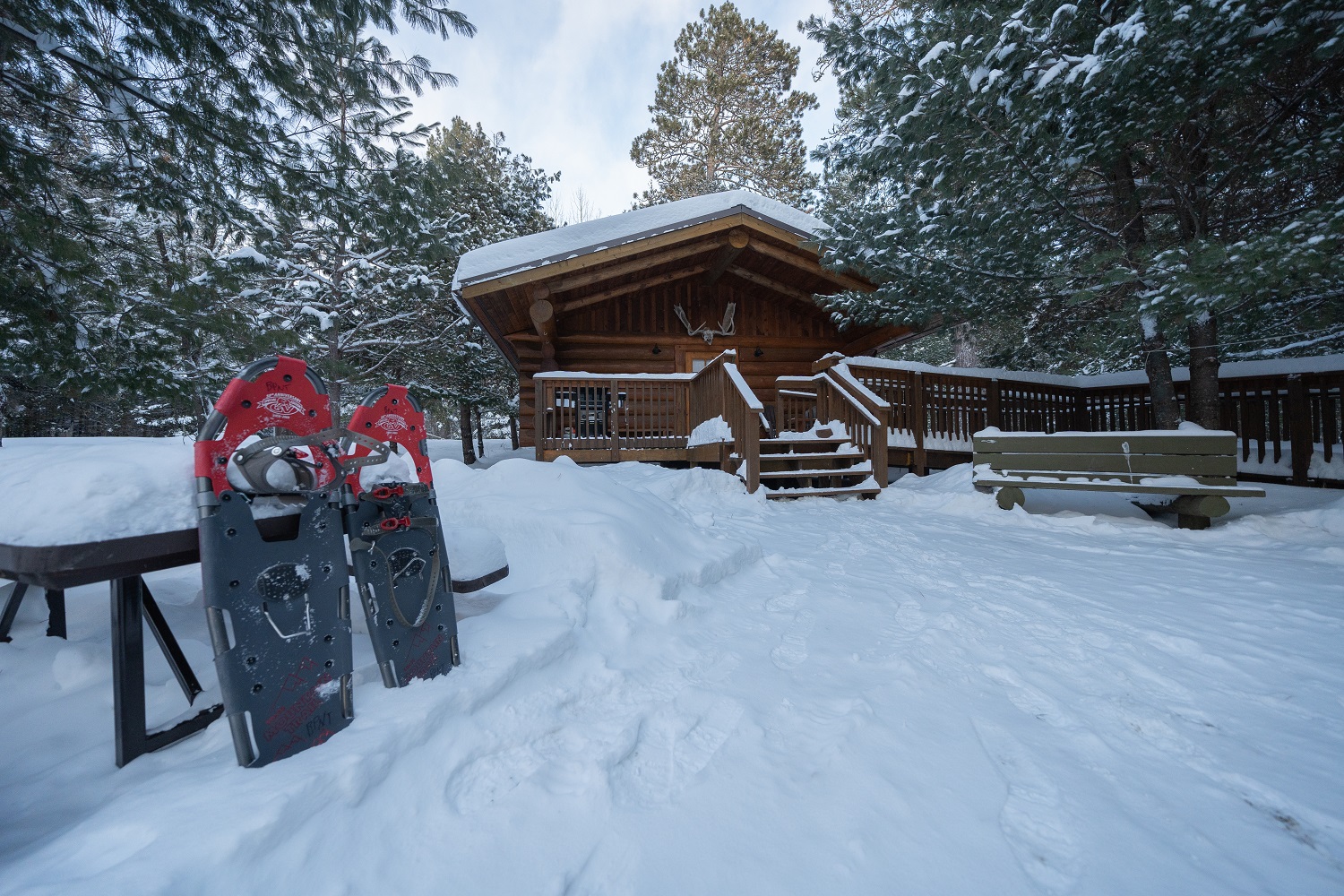
Provincial parks are not islands.
Well, some of them are. What we mean is: there is no invisible wall around parks limiting their relationships with the outside world.
Even if you never visit a park, you benefit from the pollinator diversity they protect, the CO2 they sequester in wood, roots, and peat, and the clean water filtered by protected wetlands.
Plants, animals, fungi, microbes, water, and air move in and out of protected spaces, with intimate connections on both local and global levels.
In the same way, things that happen outside of park boundaries affect the ecosystems within them. What you do at home, work, or play can impact our parks.
Whether you live next door to a park or 100 km away, here are six ways your everyday actions can help keep parks and nature reserves healthy and biodiverse:
~
1. Turn off your lights
Our night skies filled with stars are becoming increasingly polluted with light, even in parks.
If you’ve ever traveled through open farmland at night, you’ve probably noticed the glow of infrastructure like cities, factories, and greenhouses from enormous distances away.
This excess light causes something called skyglow. Skyglow hides the stars and reduces the overall darkness we experience at night.

Loss of darkness is more than the tragic loss of celestial beauty. Almost every species on Earth relies on darkness to maintain their circadian rhythm.
Plants use day length to determine when to flower and drop their leaves for the year. Insects evolved to be active at the times of day they can both find food and be safe from predators. Birds that hunt or migrate at night depend on light from the moon and stars.
Light pollution negatively affects everything from fish to frogs to trees. Artificial light decreases plant seed production, disrupts breeding frogs, and draws moths out of natural habitats like a vacuum.

Some northern provincial parks have become dark sky preserves. Many others are ineligible for this designation because their night sky has skyglow from towns and cities outside the park boundaries.
Turning off all outdoor lights, or replacing them with dimmer, warm-toned bulbs, is one of the easiest ways to help parks and wildlife.
Visit this website for more information.
~
2. Prevent the spread of invasive species
Invasive species overrun ecosystems until they push out native ones and disrupt food webs.
They’re one of the biggest threats to ecosystems and biodiversity, and once established, they are very difficult to control.
The more widely an invasive species is spread, the harder it is to control and the more likely it is to end up in a park.

To do your part from home, make your yard an invasive plant-free zone.
Watch out for species like Garlic Mustard, which produces tiny seeds that can be spread on shoes. Phragmites are similarly spread by airborne seeds, rhizomes, and contaminated soil.
Plants like European Buckthorn produce berries that birds eat, carry long distances in their bellies, and then unknowingly defecate into a nearby park.
Protect natural areas by making sure your yard isn’t a seed source for these species.
Watch for invasive species in your neighborhood and report them on iNaturalist or EDDMaps. Biologists use data from these apps to plan removal efforts across the province.

You could be the first to find a newly invading species, which will allow biologists to address the problem quickly!
Other tips to #StopTheSpread:
- clean your shoes and other equipment (including boats, bikes, vehicles, and anything else that can get dirty) before moving from one natural area to another
- always buy firewood nearby to where you’ll burn it
- never release a pet into the wild
~
3. Plant native species
Ontario Parks protects areas with incredible biodiversity, but there’s no way for us to protect them all.
It is critical that species have habitat connections between protected areas to make sure their populations do not become too fragmented.
When a species is split into isolated patches, it is far more likely that the species will become extinct and Ontario’s biodiversity and ecosystem resiliency suffers.

Keep species in parks and conservation reserves healthy by making your yard or community healthy habitat.
Native plants are the scaffolding on which most of our biodiversity depends, so planting native trees, shrubs, and wildflowers in your yard can have an enormous impact. Go the extra mile by working with community groups to add native plants to your neighborhood!
Native plants also don’t need to be 100% of your space! Adding even one or two will make a difference. For extra points, replace some of your lawn with a pollinator garden.

Remember that protected areas need to hold on to their plants, and it’s often illegal to remove them.
Buy plants from stores and plant nurseries that offer native species, or ask a friend if you can collect seeds (like milkweed pods or acorns) from their yard or woodlot.
Not only will native plants make your space valuable habitat, but you’ll also have the bonus of attracting birds, butterflies, and other wildlife for your viewing pleasure.
~
4. Make your home bird-friendly
Birds’ lives are filled with drama.
Many species routinely undertake thrilling and dangerous migrations to Central and South America, then turn around and come back a few short months later.

Others eke out a living through harsh and snowy winters using either brains or brawn. If we knew their stories, every one of our millions of birds has lived a life worthy of a gripping memoir.
Humans are also making the world birds live in increasingly dangerous.
Millions of birds collide with windows every year, sustaining concussions at best or lethal brain injuries at worst.

Millions of others are killed by outdoor and feral cats; ground-nesting birds are particularly at risk.
Ensure a bird’s journey doesn’t end in your yard by making your windows bird-friendly and keeping your cat indoors.
~
5. Use less plastic
Single-use plastics, packaging, and discarded plastic equipment are common sights in busy parks (and #ForTheLoveOfParks, please dispose of your waste responsibly).
But much of the plastic that ends up in parks is from elsewhere, washed up on our shores by wind and waves.
Millions of kilograms of plastics are dumped into the Great Lakes every year, with more added to smaller inland lakes.

Microplastics aren’t just an ocean problem: there are an estimated 43,077 microplastics in every square kilometer of Great Lakes water.
Plastic can take hundreds to thousands of years to decompose, and there is a good chance that plastic you’ve used has ended up in our lakes.
The best way to tackle our plastic crisis is to use less. Avoid single-use plastics, buy used items, and switch to reusable options whenever you can.
~
6. Do what you can to tackle the climate crisis
Like all of the problems listed above, climate change is a huge issue and impossible for individuals to solve alone. It is also one of the biggest threats to our parks. This list would be incomplete without mentioning it.
Heat trapped by atmospheric carbon from burned fossil fuels is warming our province very quickly, and it is predicted that the change will be even more extreme in the north.

Warmer temperatures are causing extreme weather, damaging trees, and harming fish.
To prevent further warming we need to do all we can to stop more CO2 and methane from reaching the atmosphere.
This will look different for every person and every region, and requires all of us to learn, listen, and cooperate.

Many of the threats to our parks are large, and it can sometimes feel that we as individuals can’t make much of a difference.
But with big problems, we need lots of people pulling in the right direction.
Turning off your porch light, planting a native shrub instead of an invasive one, adding bird-friendly dots to your windows, and talking to friends and family about the ways we can tackle problems collectively are big wins for our parks, and for Ontario’s overall biodiversity.
~


